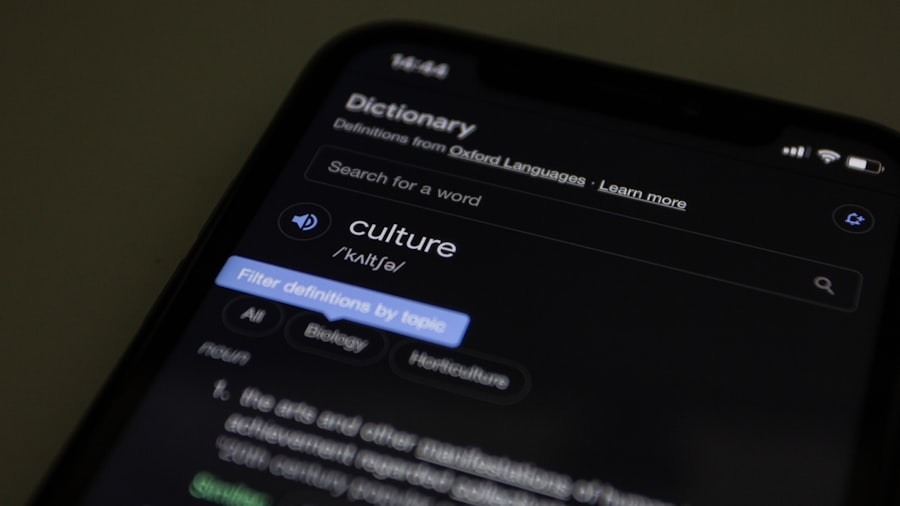
Inclusive education is a philosophy and practice that seeks to ensure that all students, regardless of their backgrounds or abilities, have access to quality education in a supportive environment. This approach recognizes the diversity of learners and emphasizes the importance of accommodating their unique needs. The core principle of inclusive education is that every child has the right to participate fully in their educational experience, which not only benefits the individual but also enriches the learning environment for all students.
By fostering an inclusive atmosphere, schools can promote social cohesion, empathy, and respect among students, preparing them for a diverse society. The concept of inclusive education extends beyond merely placing students with disabilities in general education classrooms. It involves a comprehensive understanding of the barriers that may hinder learning and participation.
These barriers can be physical, social, or pedagogical in nature. For instance, a student with a hearing impairment may struggle to engage in a traditional classroom setting if appropriate accommodations are not made. Therefore, inclusive education requires educators to adopt flexible teaching strategies and create an environment where all students feel valued and supported.
This commitment to inclusivity not only enhances academic outcomes but also fosters a sense of belonging and community among students.
Key Takeaways
- Inclusive education aims to provide equal opportunities for all students, regardless of their abilities or differences.
- Universal Design for Learning (UDL) helps educators create flexible learning environments that accommodate diverse learning styles and needs.
- Assistive technology and resources play a crucial role in supporting students with disabilities and ensuring their full participation in the classroom.
- A supportive and inclusive environment is essential for fostering a sense of belonging and acceptance among all students.
- Collaboration with parents and caregivers is key to understanding and addressing the individual needs of students and ensuring their success in the classroom.
Implementing Universal Design for Learning
Accommodating Diverse Learning Styles
For example, a teacher might present information through various formats—such as videos, infographics, and hands-on activities—allowing students to choose the method that resonates most with their learning style.
Anticipating and Overcoming Barriers to Learning
Moreover, UDL encourages educators to anticipate potential barriers to learning and proactively design solutions. This might involve using technology to provide alternative ways for students to demonstrate their understanding or offering choices in assignments to cater to diverse interests.
Creating a Dynamic and Responsive Classroom
For instance, instead of requiring all students to write a traditional essay, a teacher could allow them to create a presentation, produce a video, or develop a project that showcases their knowledge. By embracing UDL principles, educators can create a more dynamic and responsive classroom that meets the needs of all learners.
Providing Assistive Technology and Resources

Assistive technology plays a crucial role in supporting students with disabilities and enhancing their educational experience. These tools can range from simple devices, such as pencil grips and magnifying glasses, to more complex software programs that facilitate communication and learning. For instance, text-to-speech software can assist students with reading difficulties by converting written text into spoken words, allowing them to access the same materials as their peers.
Similarly, speech recognition software can help students with writing challenges express their thoughts more easily. In addition to technology, providing appropriate resources is essential for fostering an inclusive educational environment. This includes access to specialized materials, such as Braille books for visually impaired students or manipulatives for those with learning disabilities.
Schools should also consider creating resource centers where students can find additional support and guidance tailored to their individual needs. By ensuring that assistive technology and resources are readily available, educators can empower students to overcome challenges and engage fully in their learning journey.
Creating a Supportive and Inclusive Environment
| Metrics | 2019 | 2020 | 2021 |
|---|---|---|---|
| Employee Satisfaction | 78% | 82% | 85% |
| Diversity Ratio | 45% | 48% | 50% |
| Number of Inclusion Workshops | 10 | 15 | 20 |
A supportive and inclusive environment is fundamental to the success of inclusive education. This involves cultivating a culture of acceptance and understanding within the classroom and the broader school community. Teachers play a pivotal role in modeling inclusive behaviors by promoting respect for diversity and encouraging positive interactions among students.
For example, implementing cooperative learning activities can foster collaboration and help students appreciate each other’s strengths and perspectives. When students work together on projects or problem-solving tasks, they learn to value differences and develop essential social skills. Furthermore, creating an inclusive environment requires ongoing communication among all stakeholders—students, teachers, administrators, and support staff.
Regular discussions about inclusivity can help identify areas for improvement and celebrate successes. Schools might also consider organizing events that promote awareness of different abilities and cultures, such as diversity days or workshops led by guest speakers with disabilities. By actively engaging the entire school community in conversations about inclusivity, educators can create a more welcoming atmosphere where every student feels safe and valued.
Collaborating with Parents and Caregivers
Collaboration with parents and caregivers is vital for fostering an inclusive educational experience. Families are often the first advocates for their children and possess valuable insights into their unique needs and strengths. Establishing open lines of communication between educators and families can lead to more effective support strategies tailored to individual students.
Regular meetings, phone calls, or newsletters can keep parents informed about their child’s progress and any challenges they may face in the classroom. Involving parents in the decision-making process regarding their child’s education is also essential. Educators should seek input from families when developing Individualized Education Programs (IEPs) or 504 plans, ensuring that parents feel heard and respected.
Additionally, schools can offer workshops or informational sessions for parents on topics related to inclusive education, such as understanding learning disabilities or navigating available resources. By fostering strong partnerships with families, educators can create a more cohesive support system that enhances student success.
Offering Professional Development for Educators

Empowering Educators through Targeted Training
Workshops focused on topics such as differentiated instruction, Universal Design for Learning (UDL) principles, or behavior management techniques empower educators to create more inclusive classrooms.
Fostering Collaboration and Mentorship
Professional development should encourage collaboration among educators across different disciplines and grade levels. By sharing experiences and best practices, teachers can learn from one another and develop innovative approaches to meet diverse student needs. Schools might also consider establishing mentorship programs where experienced educators can guide newer teachers in implementing inclusive practices effectively.
Enhancing Teacher Effectiveness and Student Outcomes
Investing in professional development not only enhances teacher effectiveness but ultimately leads to improved outcomes for all students.
Addressing Individualized Needs and Accommodations
Addressing individualized needs is at the heart of inclusive education. Each student brings unique strengths, challenges, and learning preferences to the classroom; therefore, it is essential for educators to recognize these differences and provide appropriate accommodations. This may involve modifying assignments, offering additional time for tests, or providing alternative formats for assessments.
For instance, a student with dyslexia may benefit from receiving oral instructions rather than written ones or having access to audiobooks instead of traditional texts. Additionally, individualized support may extend beyond academic accommodations to include social-emotional considerations. Some students may require additional support in developing social skills or managing anxiety in group settings.
Implementing strategies such as social stories or role-playing scenarios can help these students navigate social interactions more effectively. By addressing both academic and social-emotional needs through tailored accommodations, educators can create an environment where every student has the opportunity to thrive.
Promoting Inclusive Curriculum and Instruction
An inclusive curriculum is one that reflects the diverse backgrounds and experiences of all students while promoting critical thinking and empathy. Educators should strive to incorporate diverse perspectives into their lesson plans by selecting texts and materials that represent various cultures, abilities, and viewpoints. For example, literature selections could include works by authors from different ethnic backgrounds or stories featuring characters with disabilities.
This not only enriches the curriculum but also allows students to see themselves reflected in what they are learning. Instructional strategies should also be designed with inclusivity in mind. Differentiated instruction allows teachers to tailor their teaching methods based on individual student needs while maintaining high expectations for all learners.
This might involve using flexible grouping strategies where students work together based on shared interests or abilities or providing tiered assignments that challenge students at varying levels of complexity. By promoting an inclusive curriculum and employing diverse instructional strategies, educators can create a rich learning environment that values every student’s contributions while preparing them for an interconnected world.
For more information on academic vocabulary definitions, check out this article on the benefits of meditation in improving language learning and retention. Meditation can help students focus, reduce stress, and enhance cognitive abilities, making it a valuable tool for mastering new vocabulary.
FAQs
What is the definition of “accessible” in academic vocabulary?
In academic vocabulary, “accessible” refers to something that is easy to approach, reach, enter, speak with, or use. It can also refer to something that is easy to understand or obtain.
How is the term “accessible” used in academic writing?
In academic writing, the term “accessible” is used to describe information, resources, or materials that are easily available, understandable, or obtainable for a wide range of audiences, including those with disabilities or language barriers.
What are some synonyms for “accessible” in academic vocabulary?
Some synonyms for “accessible” in academic vocabulary include approachable, available, reachable, understandable, and obtainable.
Why is it important to use “accessible” language in academic writing?
Using “accessible” language in academic writing is important to ensure that information and resources are available and understandable to a wide audience, including those with diverse backgrounds, abilities, and language proficiency. This promotes inclusivity and equity in academic communication.



